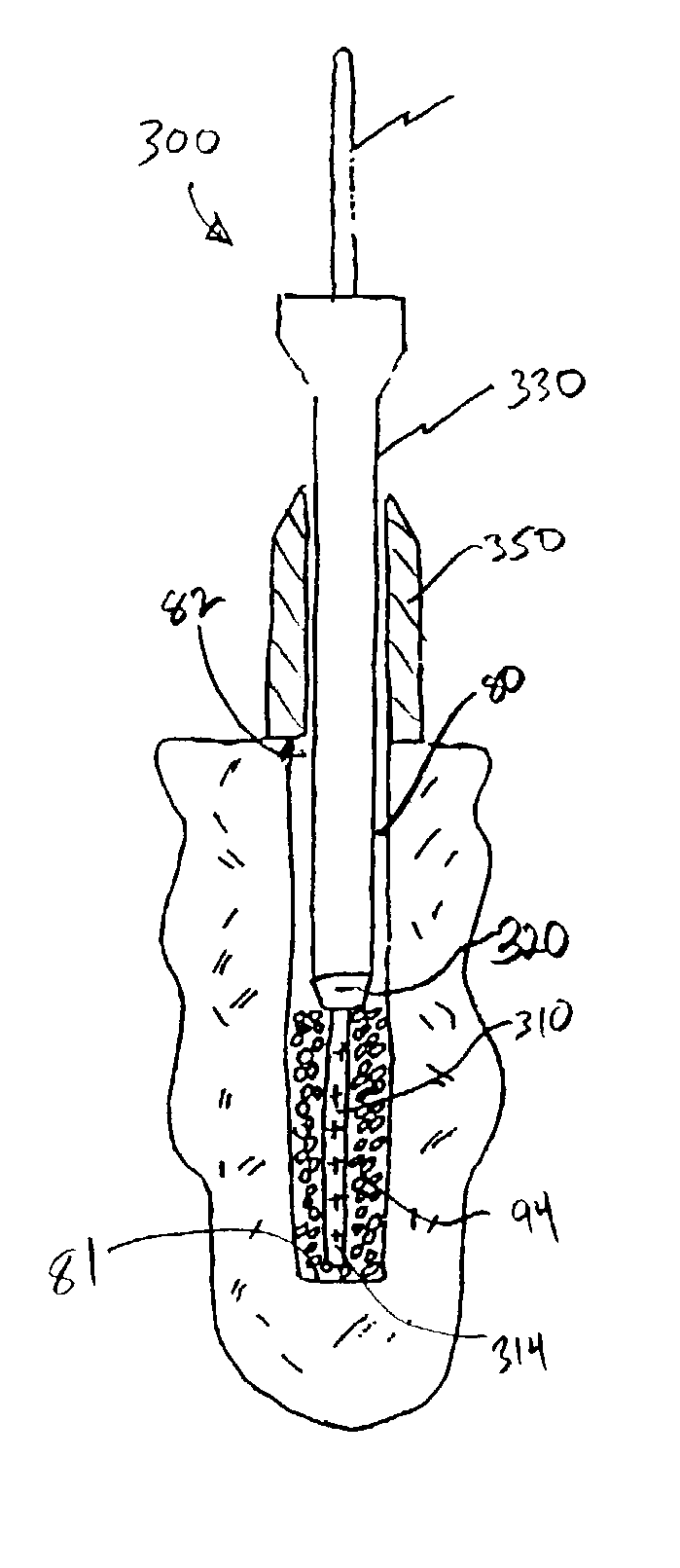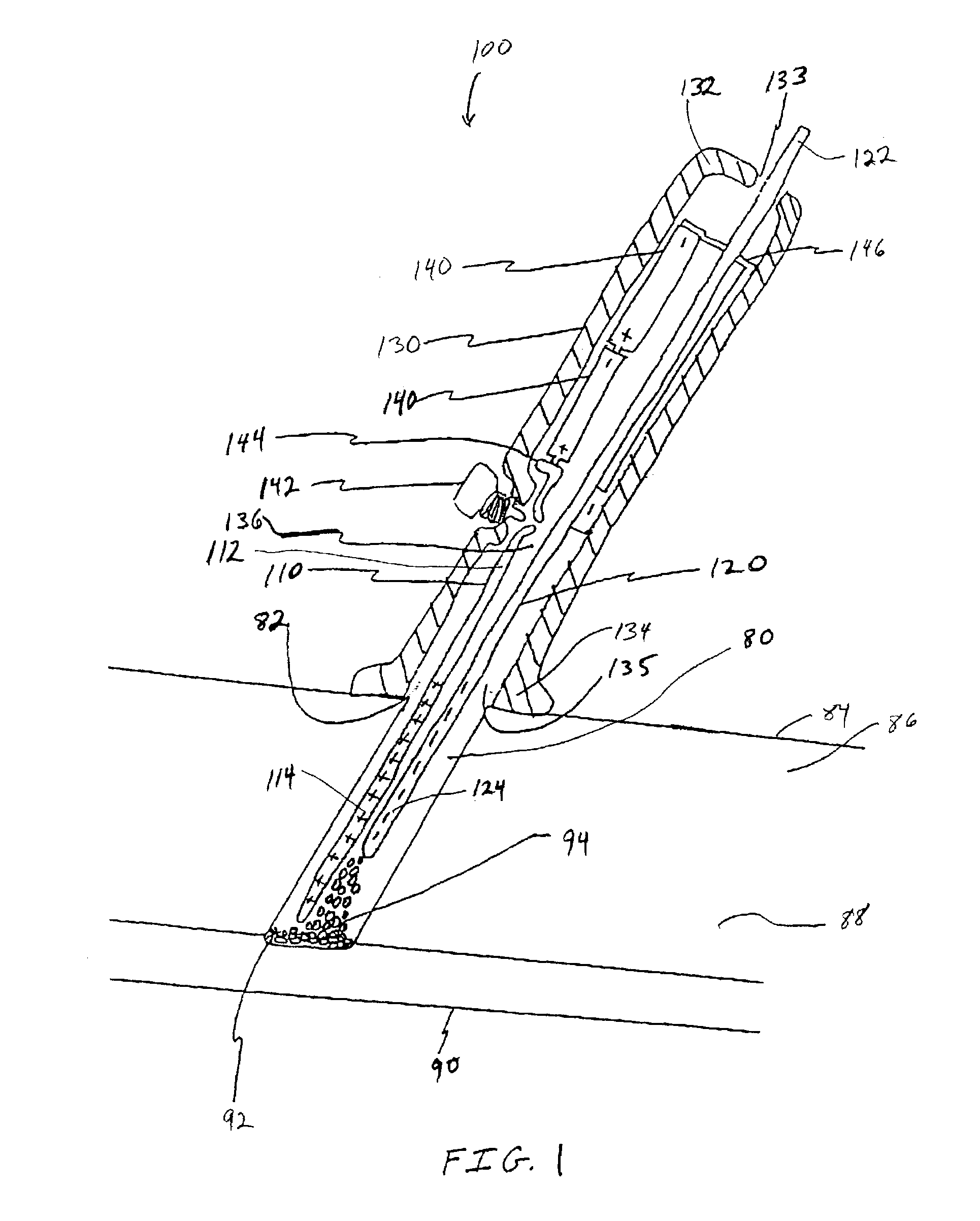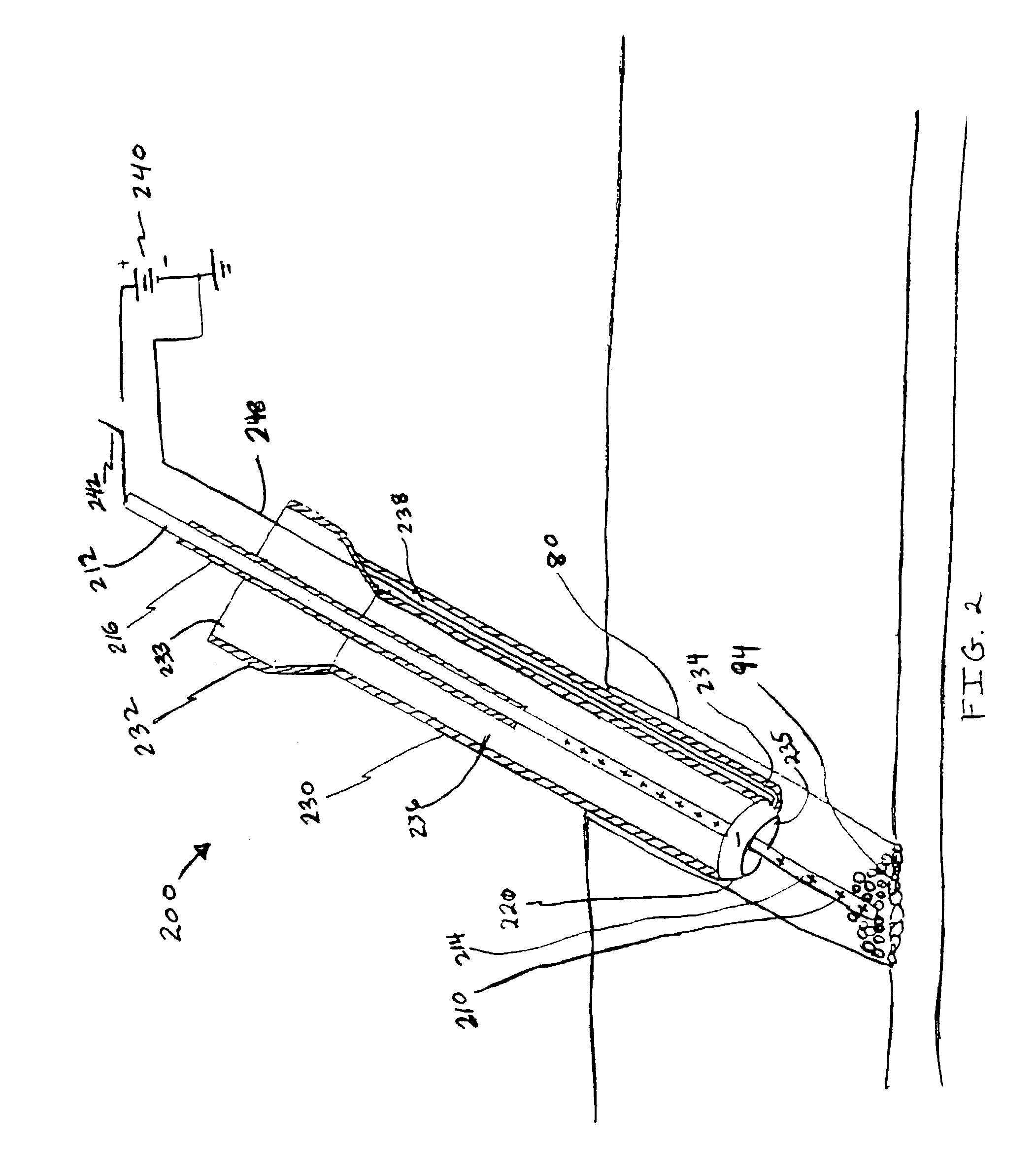Apparatus and method for electrically induced thrombosis
a technology of electrical induction and apparatus, applied in the field of apparatus and method for electrical induction thrombosis, can solve the problems of requiring a nurse to apply external pressure to the puncture site for a long period of time, causing pain, anxiety, and discomfort for patients, and causing further enlargement of the incision or puncture si
- Summary
- Abstract
- Description
- Claims
- Application Information
AI Technical Summary
Problems solved by technology
Method used
Image
Examples
Embodiment Construction
[0020]Various embodiments of a surgical device are described herein and shown in the drawings. The invention is embodied in an apparatus and method for aiding thrombosis through the application of electric potential at the treatment site of a patient. The apparatus and method can be used to repair a blood vessel, or seal a wound, opening, or puncture at the treatment site in the body of a patient. Clotting of blood (thrombosis) is induced at the treatment site by the application of a first electrode and a second electrode which cooperate to electrically induce thrombosis within the treatment site.
[0021]It has been observed that electric potential can be used to induce thrombosis. It is known that white blood cells, red blood cells, fibrinogen, and other protein components of blood are negatively charged. Natural thrombus formations within an artery may be due to abnormal electric potentials in the aortic wall. An aorta includes an outer layer of collagen and elastin that is referred...
PUM
 Login to View More
Login to View More Abstract
Description
Claims
Application Information
 Login to View More
Login to View More - R&D
- Intellectual Property
- Life Sciences
- Materials
- Tech Scout
- Unparalleled Data Quality
- Higher Quality Content
- 60% Fewer Hallucinations
Browse by: Latest US Patents, China's latest patents, Technical Efficacy Thesaurus, Application Domain, Technology Topic, Popular Technical Reports.
© 2025 PatSnap. All rights reserved.Legal|Privacy policy|Modern Slavery Act Transparency Statement|Sitemap|About US| Contact US: help@patsnap.com



